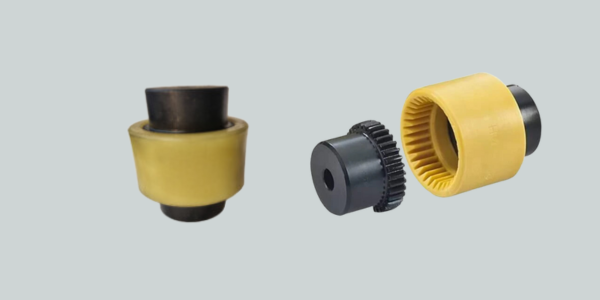Nylon Sleeve Coupling Installations: Enhancing Machinery Performance
Introduction
Nylon sleeve couplings play a crucial role in the seamless functioning of various machinery, offering durability and flexibility. Understanding their installation process is vital for optimal performance and longevity.
Understanding Nylon Sleeve Coupling Installations
What are nylon sleeve couplings?
Nylon sleeve couplings are flexible connectors used to transmit torque between two shafts, compensating for misalignment and reducing vibration.
Advantages of nylon sleeve couplings
- Flexibility: Nylon sleeve couplings accommodate angular, parallel, and axial misalignments, enhancing machinery performance.
- Durable: Constructed from robust materials, nylon sleeve couplings offer longevity and reliability.
- Vibration Reduction: They dampen vibrations, minimizing wear and tear on connected components.
- Cost-effective: Nylon sleeve couplings provide cost-efficient solutions for various industrial applications.
Common applications of nylon sleeve couplings
Nylon sleeve couplings find applications across industries such as manufacturing, automotive, and aerospace, connecting motors, pumps, and generators.
Pre-Installation Preparations
Before initiating the installation process, it's essential to gather the necessary tools and materials and prioritize safety precautions.
Gathering necessary tools and materials
Ensure you have the required tools such as wrenches, measuring tape, and lubricants, along with the nylon sleeve coupling kit.
Safety precautions before installation
Prioritize safety by wearing appropriate protective gear and ensuring the workspace is clean and free from hazards.
Installation Process
Installing nylon sleeve couplings demands precision and attention to detail to ensure optimal functionality.
Step-by-step guide to installing nylon sleeve couplings.
- Shaft Preparation: Clean and inspect shafts for damage or debris.
- Coupling Alignment: Align shafts within manufacturer specifications.
- Coupling Assembly: Slide the nylon sleeve over the shafts, ensuring proper fit.
- Fastening: Tighten coupling bolts evenly to secure the assembly.
- Lubrication: Apply recommended lubricants to prevent friction and corrosion.
Tips for ensuring proper installation.
- Precision is Key: Follow manufacturer guidelines for alignment and torque specifications.
- Avoid Over-tightening: Over-tightening bolts can cause stress on components; adhere to recommended torque values.
- Regular Inspection: Periodically inspect couplings for wear and tear, addressing any issues promptly.
Post-Installation Checks
After completing the installation, thorough inspection and testing are necessary to validate proper functionality.
Inspection procedures after installation
- Visual Examination: Check for alignment, tightness of bolts, and signs of damage.
- Functional Testing: Rotate shafts manually to ensure smooth operation without abnormal sounds or vibrations.
Troubleshooting common installation issues
- Misalignment: Re-align shafts if necessary to prevent premature wear.
- Loose Fasteners: Tighten bolts to recommended torque values to avoid coupling slippage.
- Excessive Vibration: Investigate potential causes such as misalignment or worn components.
Maintenance Tips
Regular maintenance is essential for prolonging the lifespan and efficiency of nylon sleeve couplings.
Regular maintenance practices for nylon sleeve couplings
- Lubrication: Apply lubricants as recommended by the manufacturer to prevent friction and corrosion.
- Visual Inspection: Periodically inspect couplings for signs of wear, corrosion, or misalignment.
- Cleaning: Remove debris and contaminants to maintain optimal performance.
Signs of wear and when to replace components.
- Cracks or Fraying: Replace nylon sleeves showing signs of wear or damage.
- Excessive Play: If couplings exhibit excessive play or misalignment, consider replacement.
- Reduced Performance: Any decrease in machinery performance or efficiency warrants inspection and potential replacement of components.
Conclusion
Nylon sleeve couplings are integral components in machinery, offering flexibility, durability, and efficiency. By understanding the installation process and implementing proper maintenance practices, users can optimize performance and extend the lifespan of their equipment.
Nylon sleeve couplings can last for several years with proper maintenance, typically ranging from 5 to 10 years depending on usage and operating conditions.
Yes, nylon sleeve couplings are suitable for use in moderate to high-temperature environments, provided they are within specified temperature limits.
Inspect nylon sleeves for cracks, fraying, or signs of wear. Additionally, monitor machinery performance for any abnormal vibrations or noises.
Manufacturers often recommend compatible lubricants; consult product documentation or supplier recommendations for suitable options.
While installation can be performed by individuals with mechanical aptitude, professional installation ensures precision and adherence to manufacturer guidelines.
Nylon sleeve couplings are resistant to corrosion and can withstand various environmental conditions; however, exposure to harsh chemicals or extreme temperatures should be avoided.







